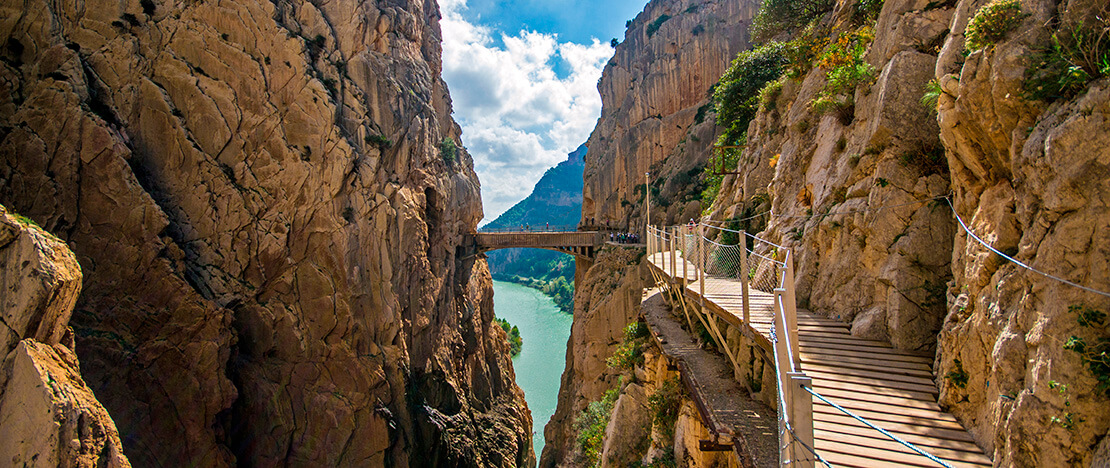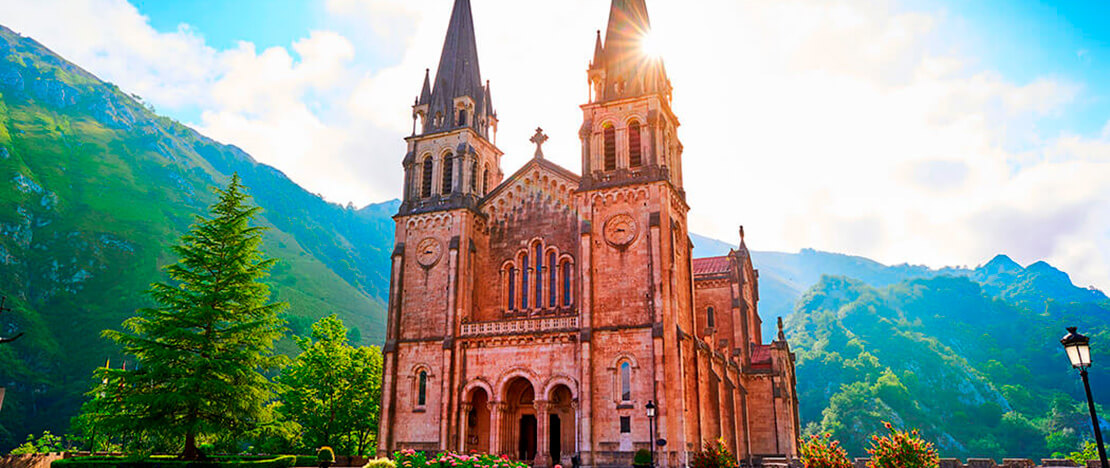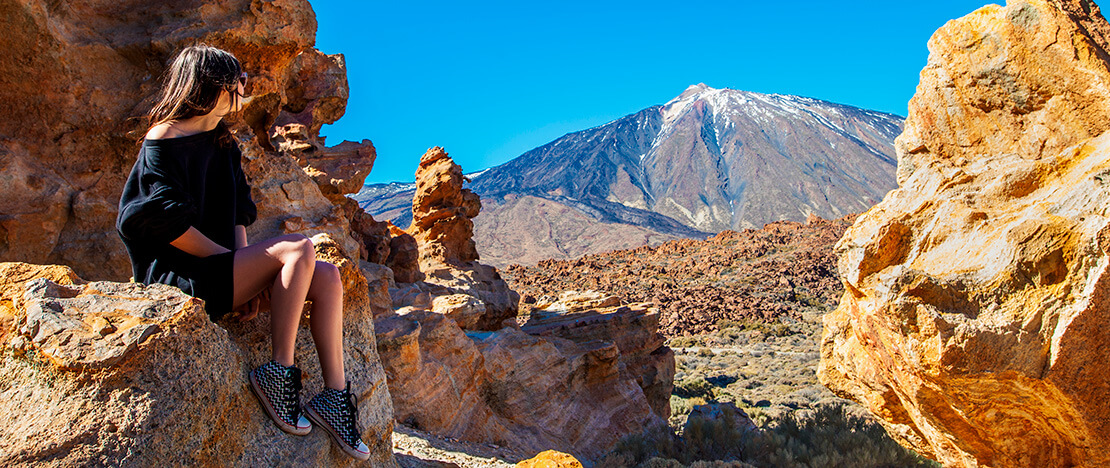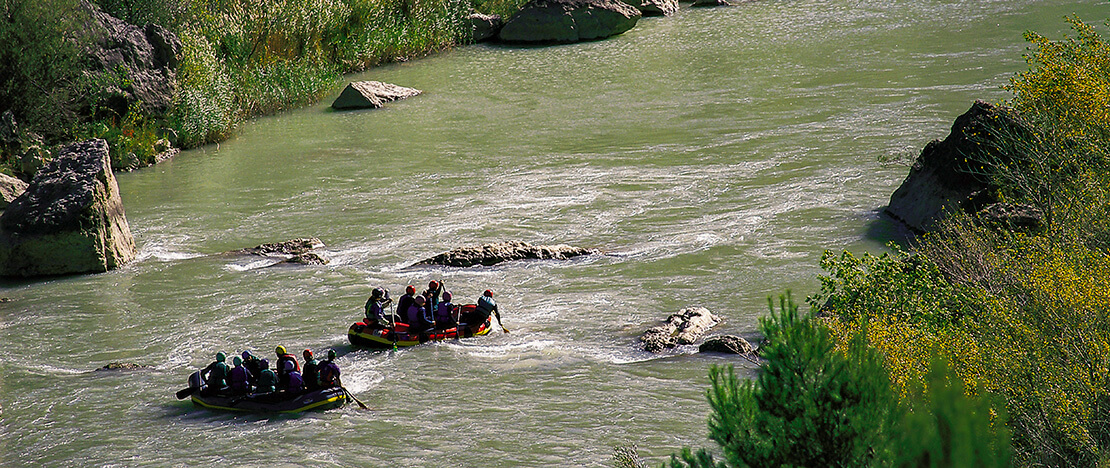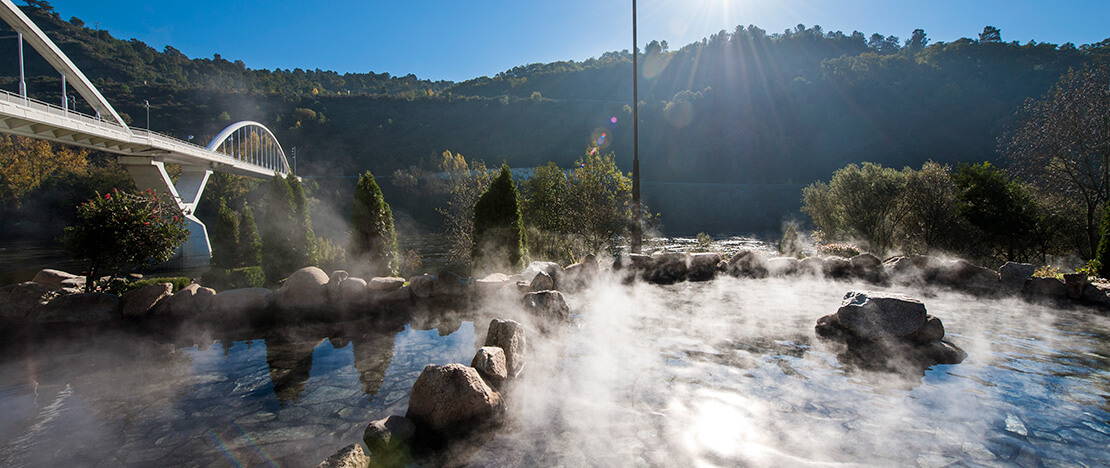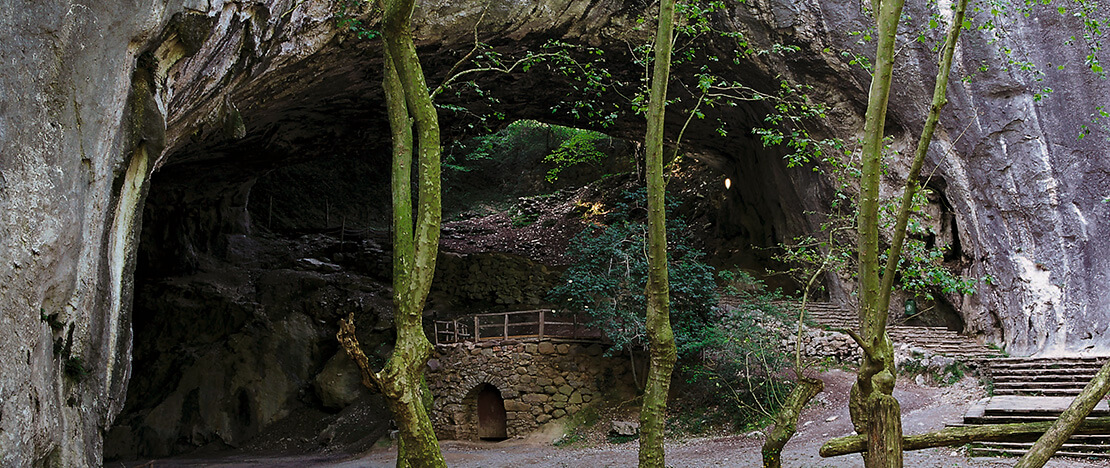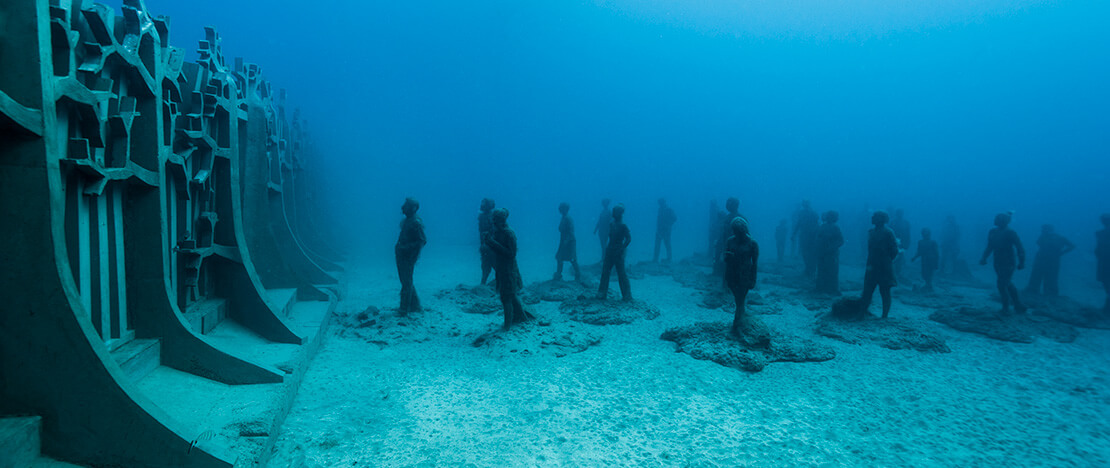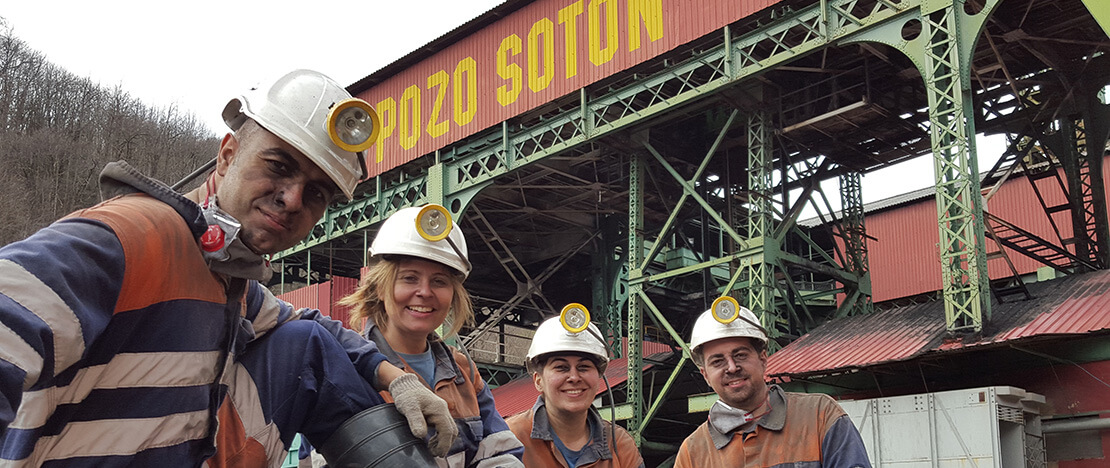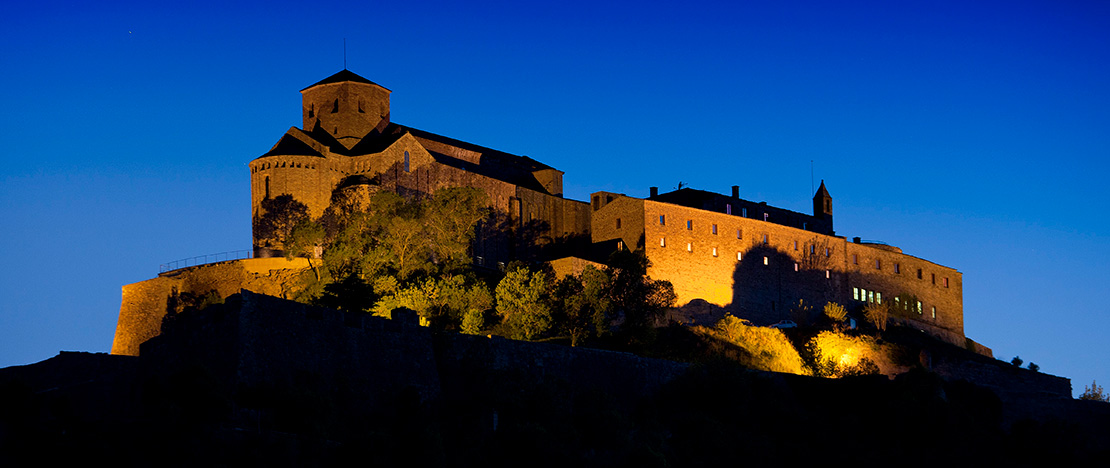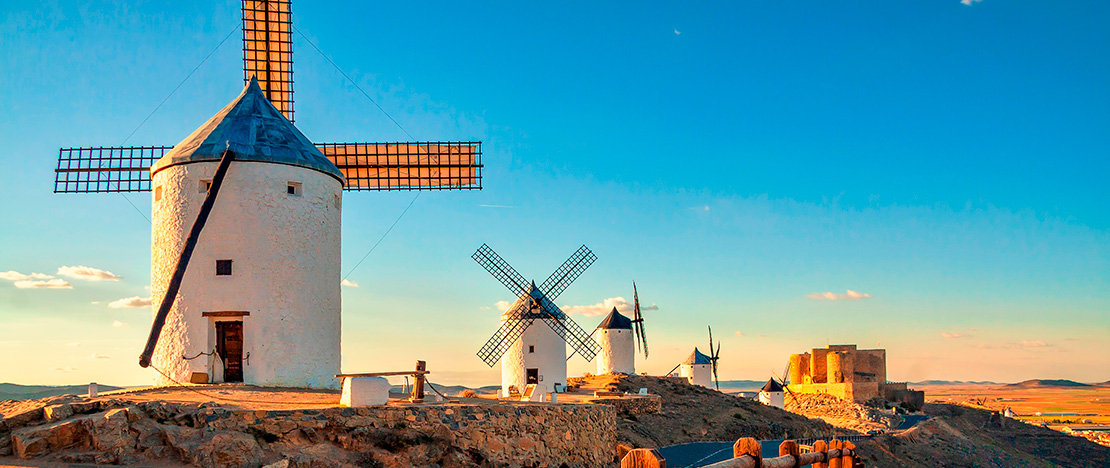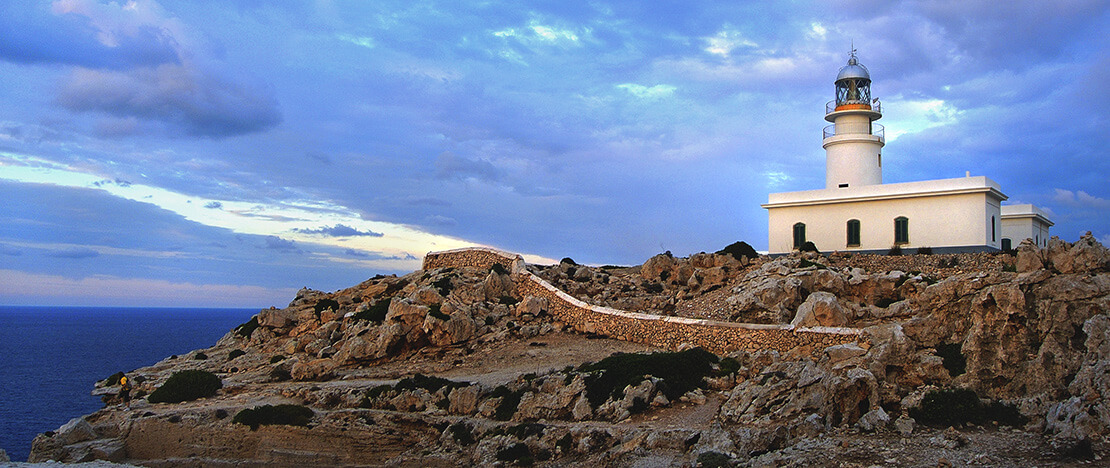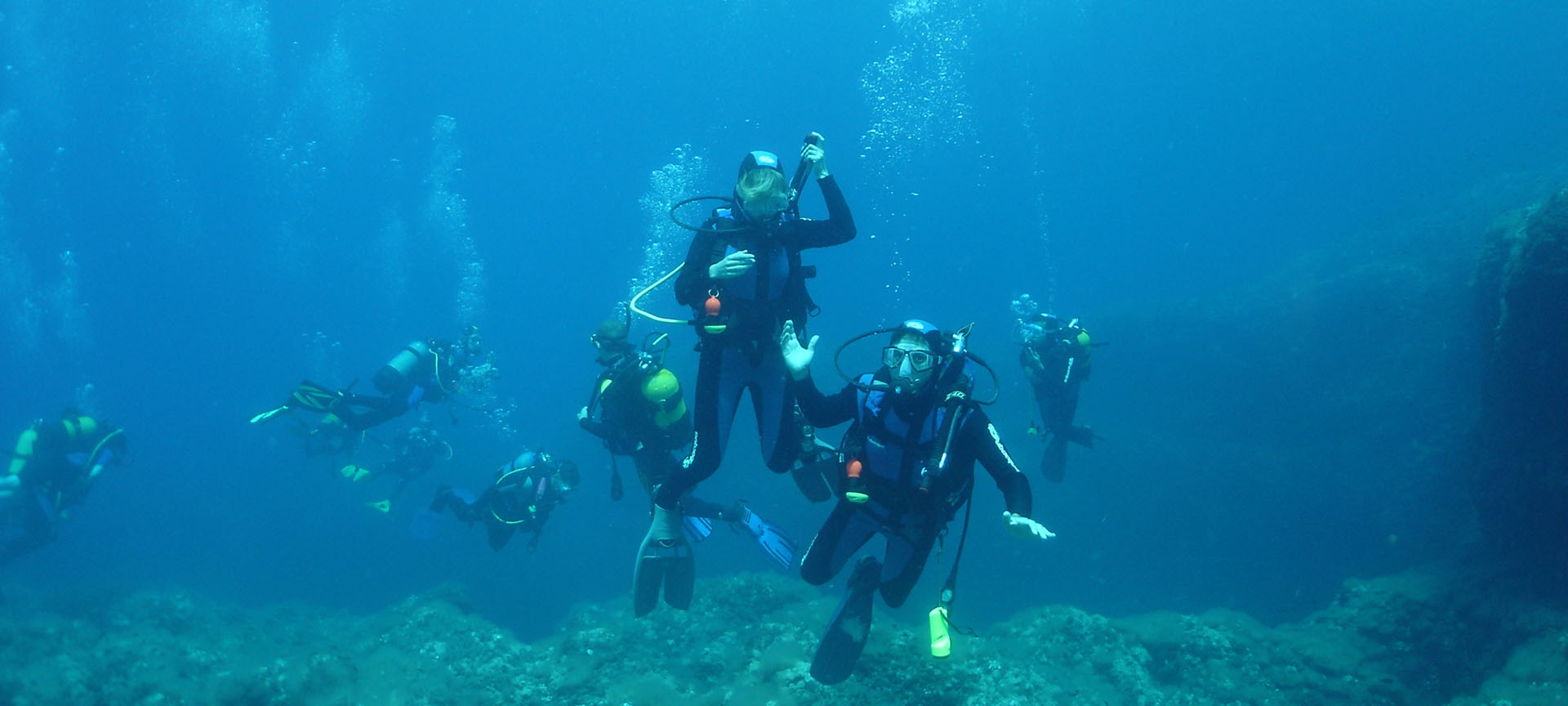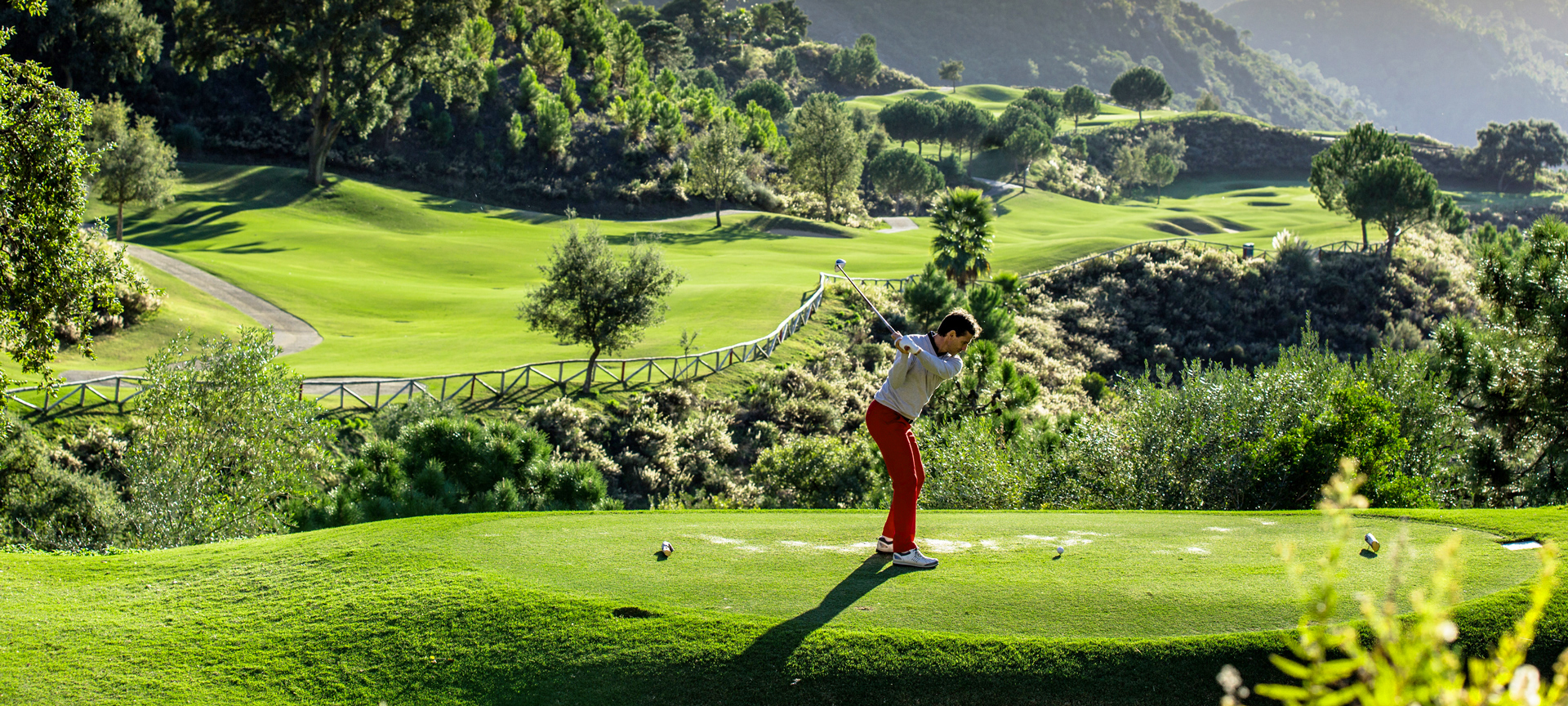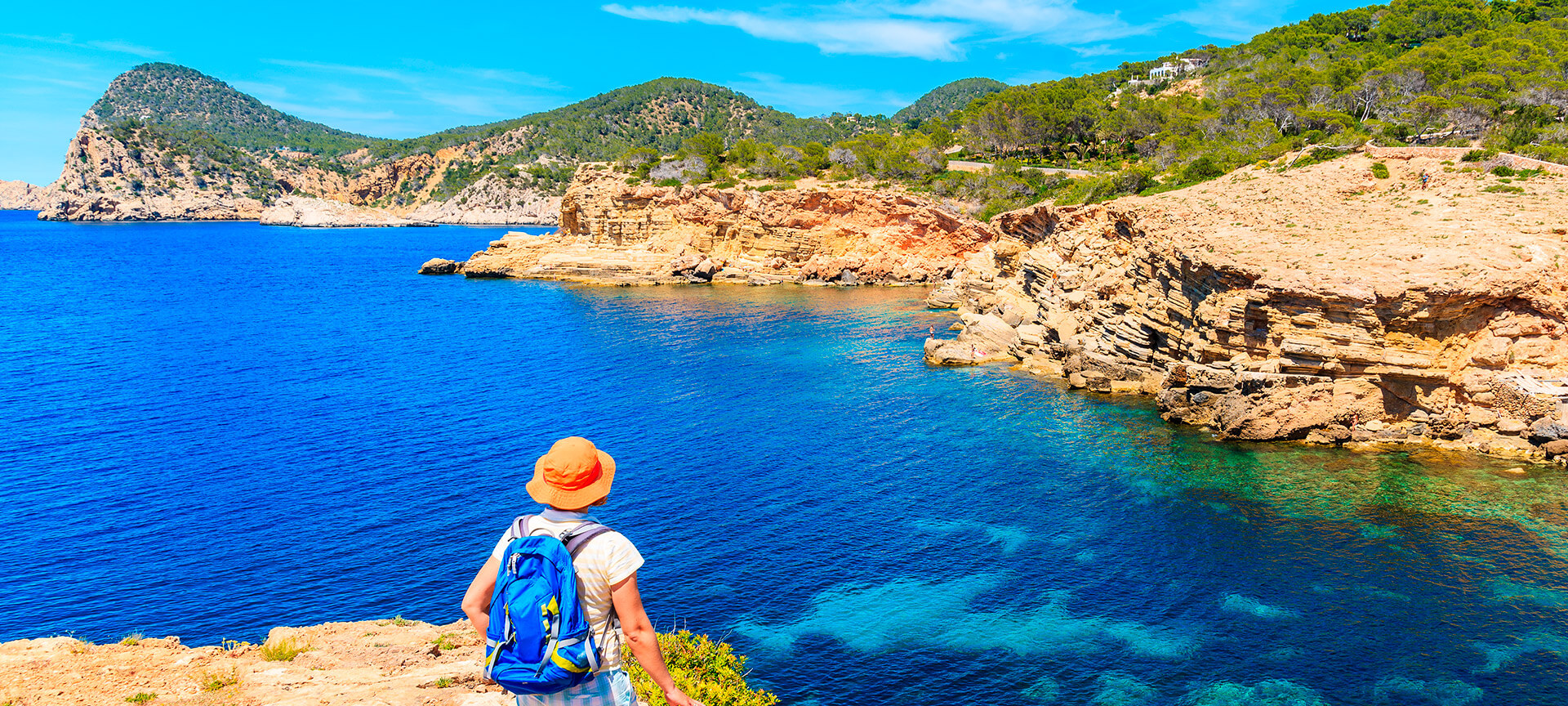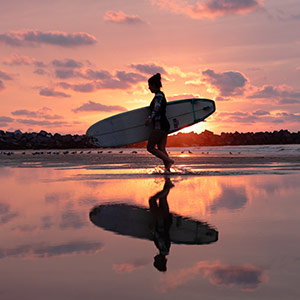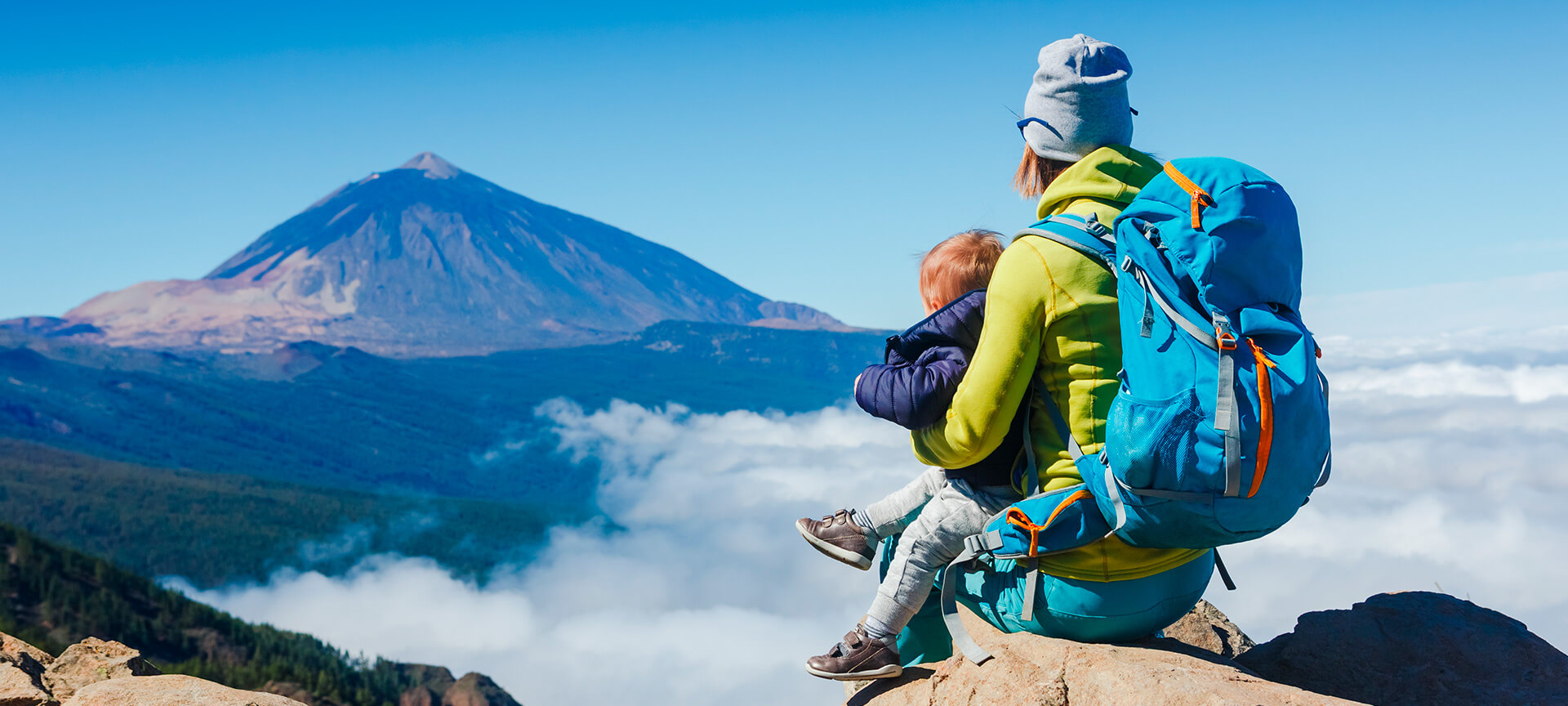
11 adventure experiences on a trip to Spain
Do you want excitement on holiday - or at least, a different travel experience? We’ve got several things to do in Spain which are sure to intrigue you. Suggestions ranging from extreme sports for the rugged outdoor types, to gentler but still unusual ideas, and even activities for the whole family, but with something different and unexpected.Follow in the footsteps of explorers and dreamers, and climb the highest volcano in Spain, dive into a sea full of sculptures, get your adrenaline pumping with “speleo-kayaking”, spend the night in a haunted castle, or hunt for giants with your kids. Go for it!
Debe activar Javascript para poder utilizar este servicio
-
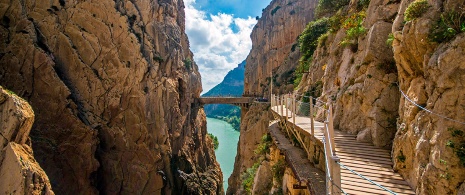
The dizzying height of the Caminito del Rey
This walk, once considered one of the most dangerous on the planet (but now made safe for tourists), is in the gorge of Los Gaitanes, between Álora, Antequera and Ardales, towns in Malaga province (Andalusia). It was built in 1905 to link two waterfalls, and renamed Caminito del Rey (the King’s path) after it was visited by Alfonso XIII. Most of the route is a walkway suspended on the sheer sides of the gorge, about 100 metres above the river, with amazing views. The walk is nearly eight kilometres long and takes three to four hours. We recommend purchasing tickets in advance on their website.
-
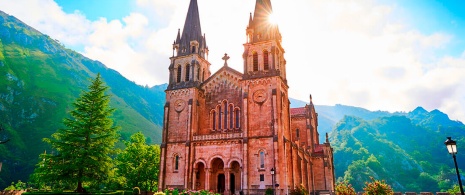
The Picos de Europa and the Pyrenees at your feet
These are two of the most impressive mountain ranges in the country, both in northern Spain. We suggest exploring them on two demanding routes, where you will be rewarded with some unforgettable scenery.To fall in love with the charms of the Picos de Europa, try the Reconquest Route in Asturias, so called because it is the path that Muslim troops followed centuries ago after being defeated. It is a nearly 60-kilometre route full of gorges and imposing peaks that begins in Sotres (one of the highest towns in Asturias) and ends in Covadonga, an area famous for its basilica and the nearby lakes of Covadonga (about 13 kilometres away).Along the border with France, the GR11 hiking trail known as the Pirenaica Trail covers 800 kilometres in nearly 50 stages. This footpath is an adventure taking you from the Cantabrian Sea to the Mediterranean, as you hear the legends of every village, marvelling at impossible peaks, native forests and karstic canyons, and staying in farmhouses and mountain refuges. Its two most special areas are the Aigüestortes i Estany de Sant Maurici and the Ordesa y Monte Perdido.
-
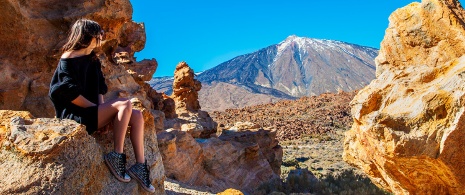
Climbing the tallest peak in Spain… which happens to be a volcano
Are you up for the experience of reaching the peak of Mt Teide? At 3,715 metres, this is Spain's tallest mountain. You will find it inland on the island of Tenerife (Canary Islands). There are two ways to experience this adventure. One is to take the challenging trail that begins at Montaña Blanca, which takes about six hours. The other is to take a cable car to an altitude of 3,555 metres, and then walk the rest of the way up on the Telesforo Bravo footpath. You must request a permit from the permit for this last stretch. What’s in it for you? Some really amazing mountaintop views of this volcanic island and the rest of the Canary Islands.
-
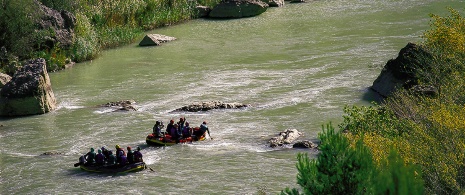
Journey to the “centre of the earth” and other extreme sports
There’s plenty to choose from… Do you want to go canyoning? Take a trip to Sierra y Cañones de Guara Natural Reserve (Aragon), where many active tourism companies are available to help you navigate the deep, narrow limestone gorges. Aragon is also a great location for rafting on the wild white water of the rivers Gállego and Ésera. And how about a bit of “speleo-kayaking”? You can combine potholing and kayaking, for example, in the famous Coves de Sant Josep de la Vall d’Uixó (Castellón, Region of Valencia), one of Europe’s longest navigable rivers. It feels like a journey to the centre of the earth.Do you like the idea of going deep into a cave? There are also plenty of places to practice caving, such as the watercourse of Valporquero cave (in León, Castile and Leon), one of the few canyoning caves on the Iberian Peninsula. A subterranean world of stalactites, stalagmites, rivers and waterfalls awaits.
-
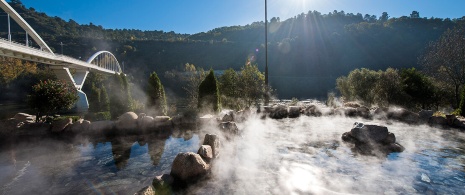
Bathing by starlight – or in a tub of wine
Would you dare dip your toe in a completely new bathing experience? Imagine a dark night. Under a star-studded sky, you sink into a pool of hot water as steam rises, with nature all around you. You can have this amazing experience in the outdoor hot springs of Ourense and other towns in Galicia, including A Chavasqueira, Muíño da Veiga, and Outariz, on the banks of the river Miño.Another unique bathing experience relates to wine. In parts of Spain like La Rioja, where their famous wines are the centre of a whole culture and way of life, there are wine therapy spas offering treatments for individuals and couples, using natural ingredients extracted during the grape harvesting and wine-making process. For example, imagine a chromotherapy bathing session with essences of wine in the water and a relaxing massage. One of the most special places offering this experience: Laguardia.
-
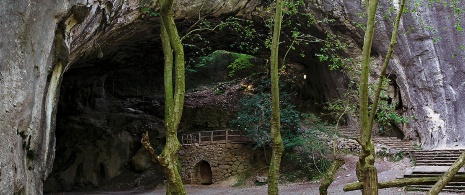
Dare to spend the night in “witch country”
Several villages in Spain are associated with legends of witches’ sabbaths or aquelarres; here we recommend two. One is Trasmoz (Aragón), a village dominated by its ancient castle, with a museum of witchcraft and superstitions. This magical place was the subject of some of the letters of the poet Bécquer.The other is Zugarramurdi (Navarre) also known for magic and witches' Sabbath and with its own witchcraft museum. Don't miss the Zugarramurdi Cave, a place that is said to have served as a meeting point for witches' gatherings and where a gastronomic festival is held on 18 August.
-
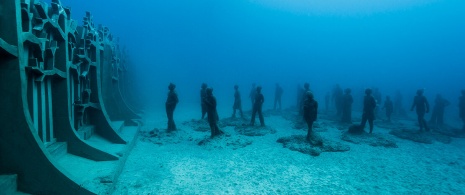
Dive to Europe’s only underwater sculpture museum
This is the Lanzarote Atlantic Museum (Canary Islands), on Las Coloradas bay, in the south of the island of Lanzarote. Keen divers will want to see this unique gallery of impressive sculptures created by Jason deCaires Taylor and on display on the seabed, several metres deep. They are all made of pH-neutral concrete, and are gradually transforming into an artificial reef. Several different companies are available to help you visit the museum with a diving instructor.
-
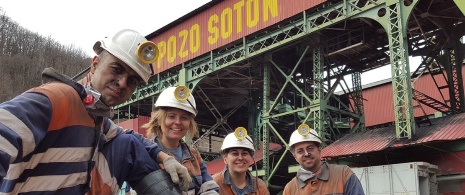
Become a miner or a sailor for a day
Two types of adventure for learning about and experiencing two traditional trades. We’ll begin in Asturias, a region known for its mining industry past, with interesting sites and other traces still visible today. Several experiences are on offer here, such as visiting theSotón mineshaft, an impressive double mineshaft, 550 metres deep, which you can go down into guided by former miners. Want more ideas? Visit the village of Bustiello to see what life was like for miners on the surface, or the Samuño Ecomuseum, where you can take a train 30 metres underground.Very close by, in Galicia, also in northern Spain, you can become a sailor for a day and explore the seafaring tradition of this land of seafood restaurants and taverns. You can accompany the percebeiros (they gather percebes barnacles from the rocks on the shoreline) on the Costa da Morte, tour the workshops making dried conger eel in Muxía, experience the excitement of the day’s business in a fish market, try out sustainable angling, and even cook what you catch. How about classes on how to cook the famous octopus dish pulpo gallego?
-
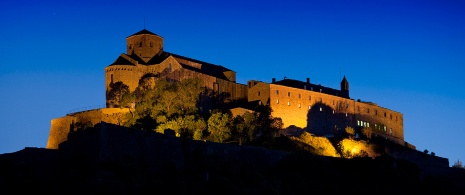
Spend the night in a haunted castle
If you’ve heard of the Paradores of Spain, you’ll know they are very unusual places to stay, including spectacular castles, palaces and buildings with centuries of history. And for the boldest guests, legend has it that some are even haunted. A few examples: At the Parador de Jaén (Andalusia), in the Castle of Santa Catalina, it is said that the ghost of “Terrible Lizard” – a former prisoner of the castle – can still be seen. It is said that furniture moved around room 712 for some time at the Parador of Cardona (Barcelona, Catalonia), quite a paranormal event. Or a spooky portrait of a prince hanging on the walls of the Parador of Olite (Navarre) appears to never allow a lamp to go out. Apart from these intriguing anecdotes, you’ll love staying at any of these unique establishments… If you dare.
-
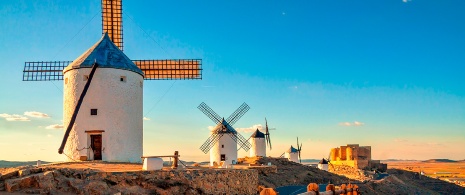
Facing up to giants
One of the most famous novels of all time, Don Quixote de la Mancha, written by Miguel de Cervantes, tells us how its main character fought against windmills believing they were giants. Today you and your entire family can “play” at imitating him by organising a trip to Castilla-La Mancha to see these famous centuries-old windmills first-hand. In places like Consuegra and Campo de Criptana you can see the imposing silhouette of these giants against the horizon at sunset. Dramatised tours are often available. In fact, you can even take the grand tour, following Don Quixote's steps.
-
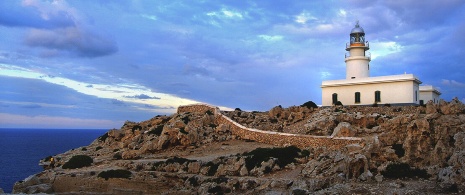
Walking or riding all the way around an island
We are talking about the Camí de Cavalls (horse path) in Menorca (Balearic Islands). This is a trail nearly 200 kilometres long around the coastline, said to have originated in the constant patrols of British soldiers on horseback, when the islands belonged to Britain. You can follow the whole trail in a circle, or just choose one of its 20 stages. It’s a wonderful walk among gullies and forests, and watching the sunset from the endless coves. There are also companies offering horseback excursions of a few hours, a whole day, or several days along the route. Are you up for this adventure?

